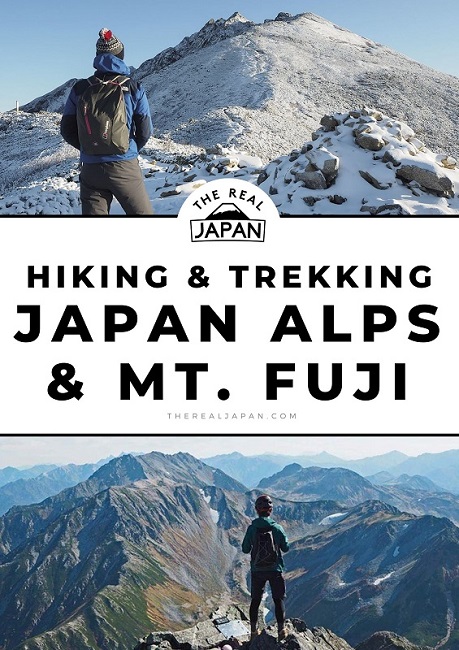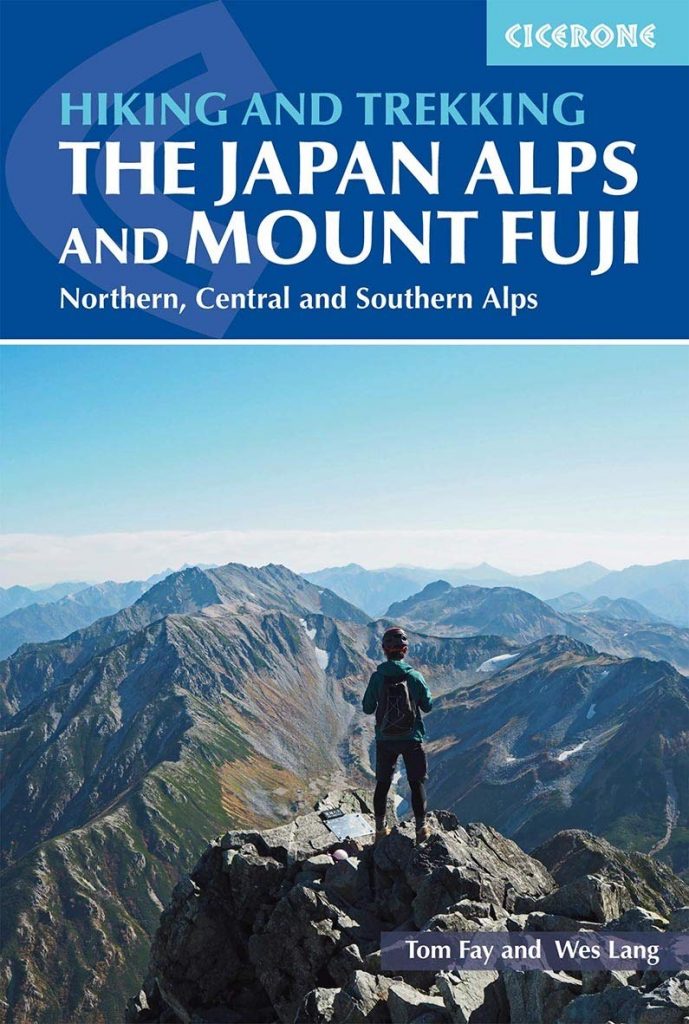If you're an occasional hiker or even a more experienced trekker, then this excellent guide book is one you really should consider.
It’s the perfect accompaniment to your next Japanese mountain adventure. If you're interested in a more detailed guide than, say, a Lonely Planet or Rough Guide, continue reading to see if this book is right for you.
The book's complete title, Hiking and Trekking The Japan Alps and Mount Fuji, Northern, Central and Southern Alps, demonstrates its full scope and that, for most travellers at least, this pocket-sized guide is likely to cover the the majority if not all the areas of interest.
It's written by British writer and teacher Tom Fay, and American founder of HikingInJapan.com, Wes Lang. Both live in Osaka and have travelled and written extensively about hiking and trekking throughout Japan and around the globe.
Hiking and Trekking the Japan Alps and Mount Fuji
Review: Hiking and Trekking the Japan Alps and Mount Fuji
by Rob Dyer
The Pacific 'Ring of Fire'
Japan sits on the Pacific 'Ring of Fire' - a region around much of the rim of the Pacific Ocean where many volcanic eruptions and earthquakes occur.
Japan is a very mountainous country (72% of the country is covered in mountains), with the vast majority of its population concentrated along narrow coastal plains, and has a culture deeply rooted in nature and the outdoors.
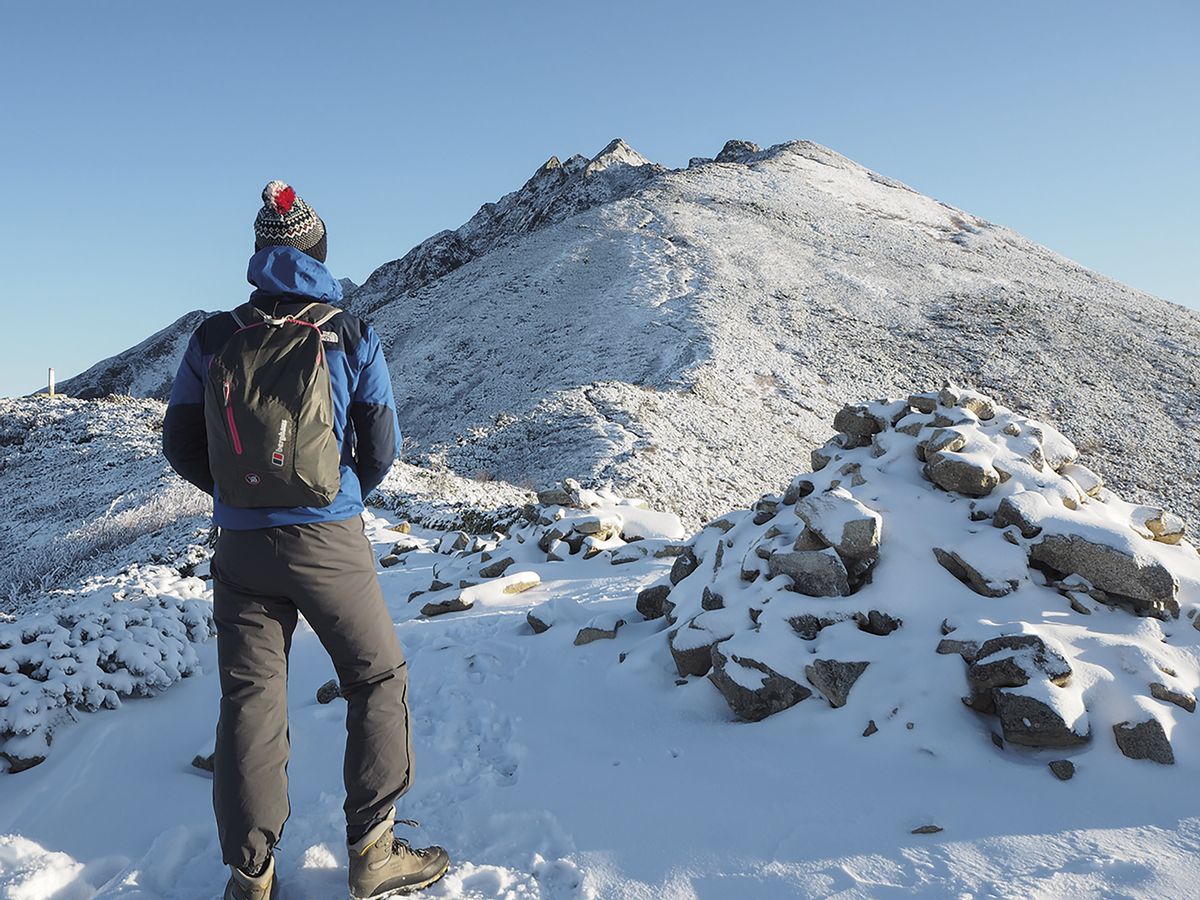
A wintery view of the Nishi-Hotaka ridgeline from Maruyama (Walk 5)
About the book
British publisher Cicerone specialises in adventure (walking, trekking, mountaineering, climbing and cycling) guides, written by locals and subject experts. Hiking and Trekking The Japan Alps and Mount Fuji is one of two titles focused on Japan. The other is Japan's Kumano Kodo Pilgrimage.
Like most of their publications, the guide is a pocket book - designed to be used in the field as much as planning at home. Its size is 17.2 x 11.6 x 2.1cm - so small enough to comfortably fit inside a jacket pocket. Despite its compact dimensions, it weighs in at a relatively hefty 460g. So, you're going to notice you're carrying it.

Hiking Japan Alps and Mount Fuji front cover

Hiking Japan Alps and Mount Fuji back cover
BUY on Amazon | BUY on Bookshop (US+UK delivery only)
Its weight comes from a combination of high production quality, all pages are full colour gloss, and that there are 400 of them. My review copy (direct from publisher Cicerone) came in a protective plastic cover.
I doubt they always retail like that, but for all the guide books I travel with, I always add a protective cover. They're also incredibly popular in Japan (which is where I picked up the habit).
The recommended retail price is $37.95 US and £22.95 UK, though you'll be able to pick it up for less online (Cicerone even offer discounts on their own website from time to time).
What's inside?
It opens with a few pages looking at mountain safety, symbols used on the route maps, and an overview map showing the position of each of the four areas featured. The rest of the book is organised into five main sections:
The walks featured throughout include all the key info you'd need, including start/finish locations, distance, total ascent/descent heights, terrain, grade (rating of how difficult the route is), time required, accommodation, facilities, access and when best to go.
VIDEO: Solo Hiking Japan's Northern Alps
Photographs, diagrams, maps and charts
Full colour photos are liberally featured throughout the book. These act both as further reference for each walk but also help convey the feeling you can expect from each walk.
Almost all the photos (several of which are reproduced in this review) were taken by the two authors.

Admiring Mt Fuji from the viewpoint at the summit of Mt Kuro-dake (Walk 14)
They add an extra visual, almost tangible dimension to the already impressive volume of useful information contained in the text. Something generic stock photos simply would not provide.
Diagrams showing the changes in elevation for the length of the trials are shown for each walk. A very handy and quick visual aid to anyone wanting to quickly get a feel for what each walk entails/lies ahead.

Hiking Japan Alps overview map
It's clear that an awful lot of experience, time and effort has gone into pulling this together.
Basic route maps for each show the start and finish points, with symbols for everything from the location of mountain huts, campsites and viewpoints to access via nearby train stations and bus stops and parking. Maps for the longer, multi day treks spread across two pages or have several maps.
Author Biography: Tom Fay
Tom Fay is the lead author of Hiking and Trekking in the Japan Alps and Mount Fuji. He is a British writer and teacher based in Osaka, living in Japan for over a dacade. Growing up in the hills of North Wales, the mountains of Snowdonia were his first outdoor passion, and he still returns year after year.
He has since hiked and climbed in many places including the Himalayas, China, South Korea, Iceland, New Zealand, Scotland and in every corner of Japan.
Tom writes mainly about travel and the outdoors for a variety of publications and media outlets, and is the author of a travel guidebook called Must See Japan. He is a member of the Outdoor Writers and Photographers Guild.

Author Tom Fay
Seasonal hiking in Japan
The guidebook highlights a variety of walks and treks in the four areas. Something for everybody, and includes trails in two of Japan's 'Three Holy Mountains': Mt. Fuji, and Mt. Tateyama. Only Mt. Haku is missing.
Most hikes in the book are intended for the summer and autumn seasons. The Mt. Fuji season is largely limited to July and August. Walking during late September to early November offer chances to seeing some of Japan's stunning autumn colours at their finest.
If you wish to avoid the worst of any snow and ice, wait until July onwards.
SEE ALSO: 12 Must-Try Outdoor Activities in Japan
Accessing Japan mountain trails
Japan's mountain trails benefit from direct links to excellent bus and train connections, making it easy to begin exploring. Something reassuring to first-timers or those with limited experience.

Roads and trails crisscross Norikura’s summit area (Walk 6)
There are tips on how best to use Japan's excellent transportation network. Such as taking night buses, sleeping overnight and arriving at your destination early in the morning - ideal for hikers who usually want a full day of activity.
Recommendations include making reservations well in advance. These are essential during Japan's public holidays and weekends during the summer season. To minimise crowds, avoid weekends and public holidays, new year and during popular events like cherry blossom season.
Where to stay when on the mountains
There are some informative, experience-based tips on using accommodation when staying overnight on the mountains. Mountain huts and camping are the two most popular options.
Apparently, huts range from basic emergency shelters, to fully staffed establishment charging for meals and beds. Younger staff often speak a smattering of English so even if you don't speak much Japanese, you shouldn't have too many problems with basic communication.
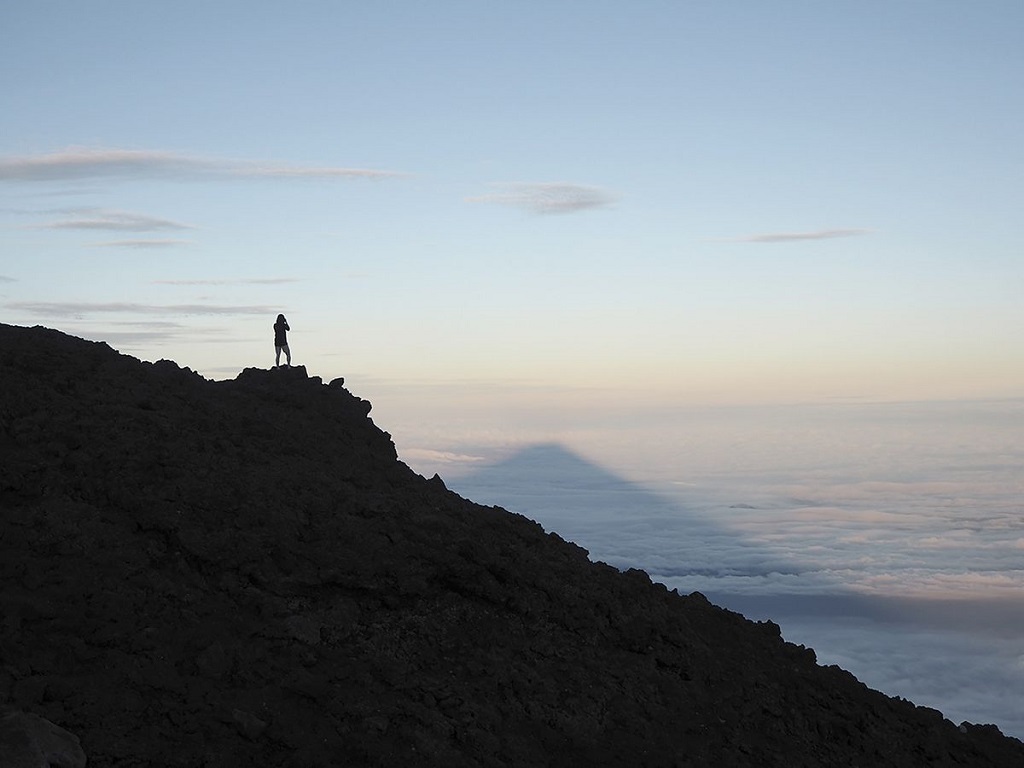
Capturing the shadow of Mt Fuji
If you are planning to use the huts, the authors suggest taking earplugs if you want a decent night's sleep, and be forewarned: huts take cash only.
You don't have to rough it all the time though.
The authors recommend a stay in a luxurious ryokan, saying it can "seem like absolute heaven after a few days spent roughing it in the mountains". The rejuvenating effects of soaking in an onsen sounds like a great way to really appreciate the benefits of this pastime.
What to do about money in the mountains
It's good to see in the section on money correctly pointing out that although Japan is usually thought of as an expensive country, it is possible to travel on a budget with just a little planning.
While transportation and accommodation are two of the biggest drains on finances, they also make it clear that eating out is often cheaper than in many other developed countries (and there is no tipping). Get cash out in advance and carry with you. Some popular hiking spots such as Kamikochi have no ATMs or convenience stores.
Nice to see mention of sampling Japan's unique seasonal and local and regional specialties. Plus mountain specialities such as boiled grasshoppers and bee or wasp larvae. Both (apparently) not as bad as they sound!
Author Biography: Wes Lang
Wes Lang has explored Japan since relocating to the country in 2001. In 2008 he became the first American (and one of only a handful of foreigners) to climb the Nihon Hyakumeizan, Japan's '100 Famous Mountains'.
He has since gone on to complete the Kansai Hyakumeizan (100 mountains of the Kansai region) and is currently climbing the highest mountain in each of Japan's 47 prefectures.
He is the founder of HikingInJapan.com - a website providing comprehensive hiking information for the Hyakumeizan and beyond.
His travels have taken him to the mountains of South Korea, Taiwan, New Zealand and throughout the US. Wes lives in Osaka with his wife and daughter.

Author Wes Lang
Mt. Fuji - Japan's highest peak and a national icon
An estimated 300,000 people climb Mt. Fuji every year.
Some of them might be surprised, disappointed even, to find not only the ubiquitous vending machines but even an entire post office on the summit. But at least I guess forewarned is forearmed.
The authors make it clear however that in spite of these human inroads, the mountain itself should not be underestimated.
Unlike some other walks or treks in the book, the shear volume of other walkers on Mt. Fuji should, in the words of Fay and Lang, be embraced in a sense of camaraderie: "The fact that you'll be hiking it alongside hundreds of others from all over the globe is best accepted as a unique aspect of climbing Fuji rather than fought against."

The iconic Fuji-san, Mt. Fuji
Four main routes to the summit of Fuji-san (as the locals call it) are included.
There are 10 stages, also known as stations. Buses run as far up as the 5th station of each of the four main trails, where many tourists begin their hike. The entry also includes sections covering how to get there, available mountain huts, when to go, what to take, Mt. Fuji specific climbing notes, and more.
If you're thinking of climbing Japan's most iconic mountain, be advised that the climbing season on Mt Fuji is fairly short, running from early July to early September. Meaning you should expect to see thousands ascend every day. In other periods and during the snow season, climbing Mt. Fuji is prohibited.
Of course, because of its international popularity there are signs in English all over the mountain. This is in contrast to some of the lesser-known walks in the other regions included in the book. Which is why a liberally illustrated and photographic reference guide like this is so valuable.

Views of Masago-dake, Mt Bessan and Mt Tsurugi-dake in the distance (Walk 2)
Safety tips and considerations when hiking in Japan
The book's absolutely packed with nuggets of information that anyone, but especially newcomers to the hobby, will benefit greatly from. Such as making use of tozan post - post boxes dedicated to a 'mountain climber register' where hikers write their name and hiking plan to aid authorities should someone go missing.
Although you hear a lot in the media about the ever-present impact of earthquakes in Japan, in the mountains they're rarely a serious risk. Fay and Lang point out that Japan's annual typhoon season (between late June to October) is a far greater threat.
Again, do your homework, avoid the season where possible and be prepared to alter your plans if necessary.
They also advise on getting vaccinated against Japanese encephalitis. Although rare, it's a serious, viral brain infection, for which there is apparently no cure. Foreigners travelling at least one month in rural farming areas run the greatest risk.

The final climb towards the summit of Mt Yake-dake (Walk 4)
I was a little surprised to read that fires are strictly prohibited, but even more surprised to hear about the risk of inhaling poisonous gases from active volcanoes. Something that, as a relative novice to the hobby, wouldn't have even occurred to me.
Take home message: don't skip the safety advice!
Excellent appendices
Six appendices conclude the guide. These include route summary tables for the walks and treks, an excellent directory of mountain huts including their facilities, telephone numbers and website address where available.
A handy language glossary includes useful phrases, signs, mountain and camping specific words, food and drink, weather etc. There are six pages of tables listing phrases in English and their spoken (pronunciation) and written Japanese (character) equivalents.
If you don't speak the language, you might want to check out my post: How to travel in Japan (when you don't speak Japanese) for some pointers.
It finishes with a list of useful contacts and additional resources, and further reading, including some other key mountaineering, hiking and walking guides.
What could be improved
I do have some suggestions for improvements that, hopefully, will be considered for incorporation into future editions.
Instead of simply repeating the title of the book at the top of every left-hand page, why not print the region followed by the area, e.g. "The North (Kita) Alps - Hakuba". Far more useful. Then when flicking through the book one can immediately see and rapidly find the region/area of interest.
Also, please add an index! There being no index whatsoever is an oversight in a reference work like this. Having one would be particularly helpful to those not already familiar with or well-versed in hiking in Japan.
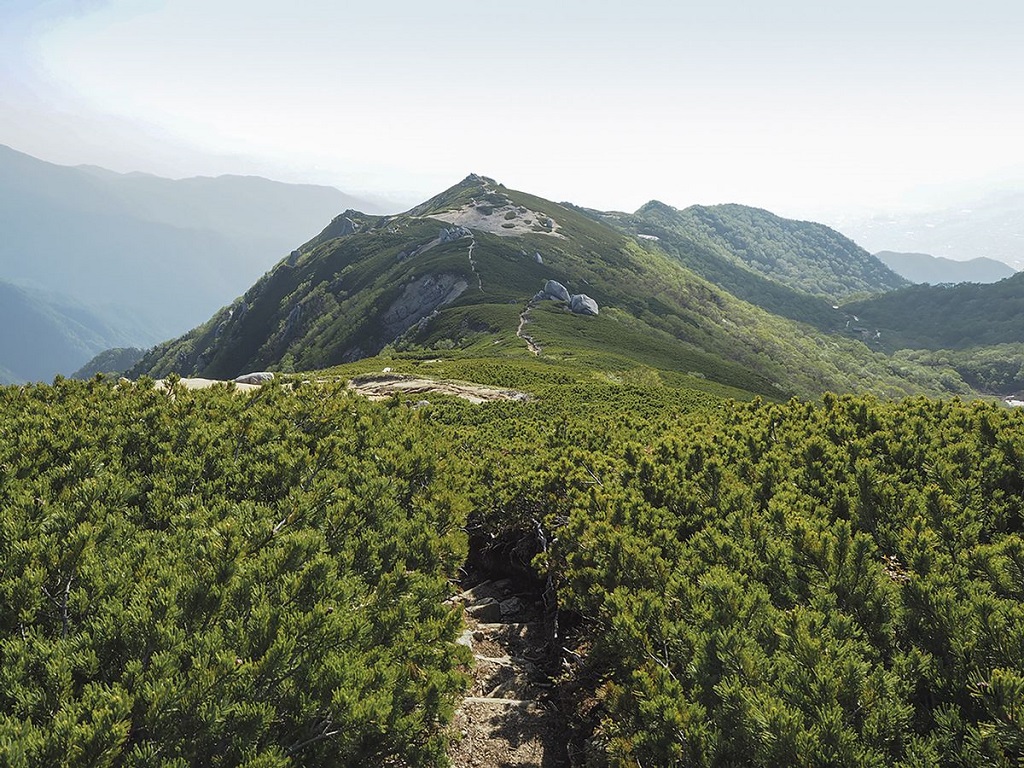
Creeping pine grows in vast swathes on many mountain tops in the Japan Alps
An index would provide easy look up for specific mountains, many of which feature in the guide (eg in multi-peak treks) but do not appear in the table of contents at the front of the book. It would also make searching for content by region, area, prefecture, town, nearby city, etc, etc, quick and simple.
The exclusion of an index is all the more perplexing when so much effort has clearly gone into the many excellent appendices.
I don't know if the lack of index is a feature lacking from all of Cicerone guides. If it is, frankly, they need to add them in future. Any travel guide not including an index fails to understand how people use reference books.
(Poor use of indexes is something I’ve complained about before. Even the big names like Rough Guides can still improve in this area.)

The entire South Alps ridge (Trek 13) as seen from Mt Ho-o
Conclusions
This guide book is well-designed to be used hands on, detailed and practical.
Although I've done some walking throughout Japan, I knew little about the formalities of hiking and trekking. Having read this book, I feel suitably armed it covers all I think I need to know.
Hiking and Trekking The Japan Alps and Mount Fuji is not only great for studying in preparation or planning a hike or trek, but also the ideal companion in the field. It's high quality slight gloss paper is robust enough for daily thumbing, and its size suitable for trouser pockets or easily popped into a jacket pocket.
Even if you are only an occasional walker, I can thoroughly recommend this excellent guide.
Buy Hiking and Trekking The Japan Alps and Mount Fuji
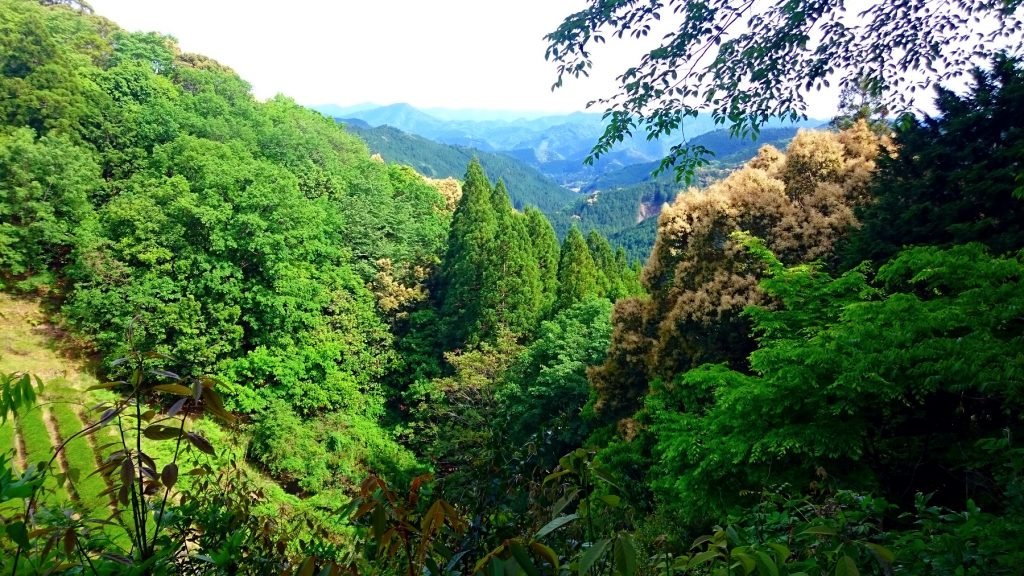
Mountains of Central Japan
If you'd like an expert to guide you, here's a selection of bookable guided hiking tours and experiences.
Each includes full details of the experience, date availability, customer reviews and offers immediate booking.
(Links will open in a new window to The Real Japan partner website Rakuten Travel Experiences.)
Select Your Hiking & Trekking Experience...

About the Author
A writer and publisher from England, Rob has been exploring Japan’s 6,800 islands since 2000. He specialises in travelling off the beaten track, whether on remote atolls or in the hidden streets of major cities. He’s the founder of TheRealJapan.com.
Resources
Buy Hiking and Trekking the Japan Alps and Mt Fuji on Bookshop.org
Buy Hiking and Trekking the Japan Alps and Mount Fuji on Amazon
Authors' websites:
ThomasFay.com
HikingInJapan.com (Wes Lang )
Official website for Mt. Fuji Climbing
Further Reading
12 Must-Try Outdoor Activities in Japan
How To Choose The Best Japan Travel Guidebook
Tokyo, Kyoto & Hiroshima Golden Route guide
The Real Japan Planning Travel Hub
Enjoyed this article? Why not share this image? ↓
BUY on Amazon | BUY on Bookshop (US+UK delivery only)
Have you read Hiking and Trekking the Japan Alps and Mount Fuji? Or maybe you've read another Japan guide that inspired you onto further adventures? If so, I'd love to hear your thoughts - please leave a comment below...

